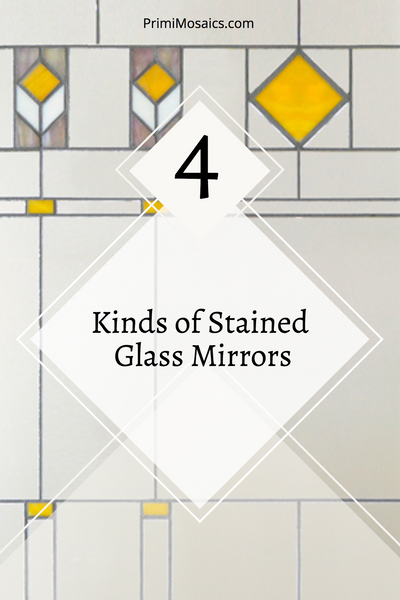
Let's face it, mirrors are a necessary part of our daily routine, but they can also be a little boring. Enter stained glass mirrors! These beauties not only reflect your good looks but also add a pop of color and personality to your space.
In this blog post, we'll explore the different types of stained glass mirrors that can bring a unique charm to any room, and how they can even make you feel a little more fabulous each day. So, whether you're a fan of modern or traditional decor, read on to discover the magic of stained glass mirrors. Get ready to add a touch of elegance, and a lot of sass, to your home!
1. Leaded Stained Glass Mirrors
Traditional stained glass mirrors are made using the same techniques that have been used for centuries. Stained glass made with lead came involves cutting pieces of glass to the desired shapes and sizes, then fitting them together like a puzzle using strips of lead called "came." The came is then soldered at the joints to hold the glass pieces in place and create a sturdy frame around the design.
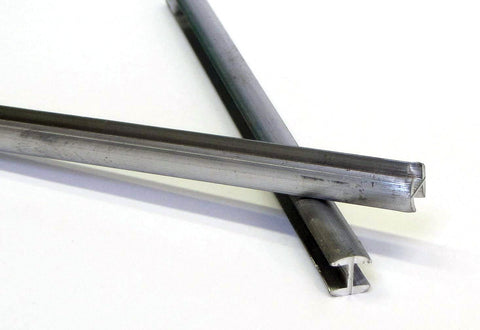
Strips of lead came

Soldering lead came at the joints


Two examples of leaded stained glass mirror Photos: 1st Dibs (top) and Emilie Omnesvitrail (bottom)
2. Copper Foil Stained Glass Mirrors
Stained glass made with copper foil involves wrapping each piece of glass with a thin strip of copper foil. The pieces are then arranged to form the desired design and soldered together at the joints. The copper foil creates a strong bond between the glass pieces and allows for more intricate designs than traditional lead came. This technique was popularized by Louis Comfort Tiffany in the late 1800s and is still used today for creating stained glass windows and mirrors in a variety of styles.

Soldering of copper foil (Photo: Everything Stained Glass)
Copper foil has a less uniform appearance than lead came, and is ideal for fiddly, small shapes like lamp shades and small crafts. Extra care must be taken to prevent mirror corrosion in mirror applications. Flux, a chemical agent that binds solder to copper, reacts with the silver backing, so the edges of the mirror must be sealed beforehand.
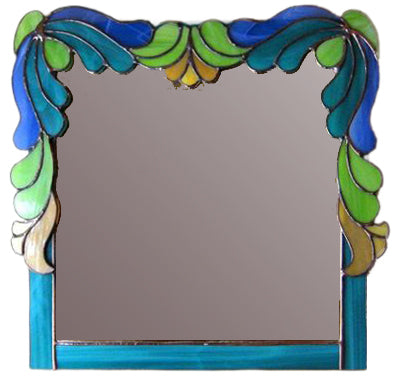
Blue and green copper foil stained glass (Photo: Liz Schaeffler, Wildflower Design)

Round copper foil stained glass (Mirror by Lisa Snow)
3. Faux Stained Glass Mirrors
Faux stained glass is an imitation of traditional stained glass that’s made by painting or tinting glass with vibrant colors. Faux lead strips can be used to mimic the appearance of lead lines. These products are essentially adhesive strips that can be pressed into the glass. Colored glue is also an alternative to recreate the appearance of lead came. To complete the look, colored glass paint is brushed onto the mirror’s surface.
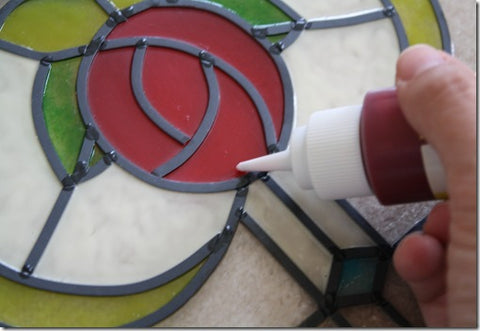
Faux stained glass with adhesive strips and glass paint (Photo: The Pink Peony of Le Jardin)
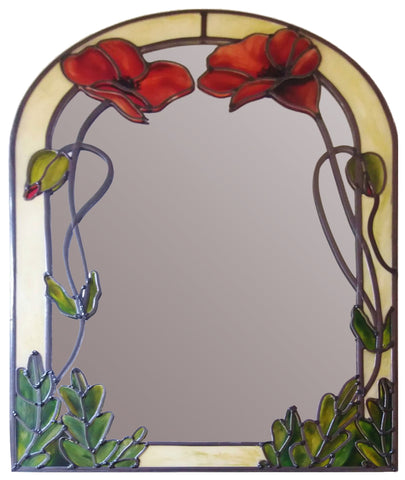
Faux stained glass mirror by Douglas Payne Designs
4. Mosaic Stained Glass Mirrors
Mosaic mirrors are created by arranging small pieces of materials, such as stained glass, stone, or tile, onto a substrate. The pieces are then secured in place with adhesive. For mirrors, care must be taken to use a neutral cure adhesive to prevent the mirror from desilvering. Following this, grout is applied to fill in the channels.
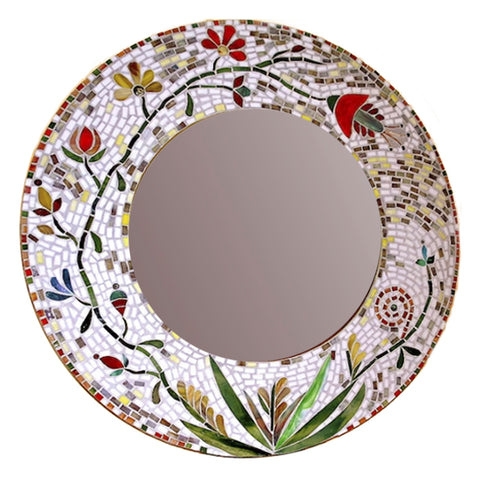
Round mosaic mirror by Pam
When it comes to mosaic mirrors, the design possibilities are endless. The Prarie-style and Art Deco mirrors on this website may have the appearance of traditional stained glass because of the width of the grout channels but they are, in fact, stained glass mosaics. They're a great way to add a unique touch to your home decor. Versatile, customizable, and sustainable, these heirloom pieces make a great investment for any home.

Square mosaic stained glass mirror by Victoria Primicias
Stained glass mirrors can bring a unique charm to any room. From traditional leaded stained glass mirrors to modern mosaic iterations, there is a style to suit any taste. Whether you choose to go for a bold and colorful design, or a more subtle and elegant one, a stained glass mirror is a perfect way to add a touch of personality to your home decor. So, why settle for a boring mirror when you can have a stunning piece of art that also reminds you of how fabulous you are?
About Primi Mosaics
Primi Mosaics creates decorative wall mirrors that salute the past while enhancing the modern lifestyle. Inspired by turn-of-the-century designs of the Arts and Crafts movement, Frank Lloyd Wright and Art Deco, these mosaic stained glass mirrors bring a unique style and elegance to both modern and traditional decor.
